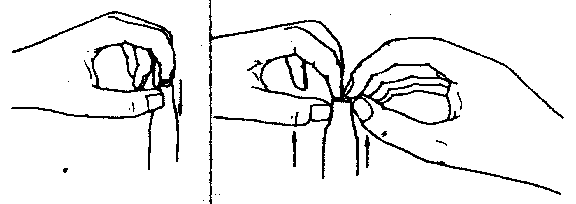![]() Note:
Note:
Sa Mediese Tysskrif [South African Medical Journal], Volume 62: Page 751, 13 November 1982.
To the editor:
In the Paediatric Casualty Department at the Johannesburg Hospital we frequently see children with torn foreskins caused by forcing the foreskin back over the glans penis. The damage is most often done by clinic sisters, but I regret to say that it is sometimes caused by general practitioners who seem to be unaware of the normal development of the foreskin.
The normal foreskin will in the normal course of events dilate sufficiently to slip over the head of the penis by 5 or 6 years of age.
![]() Note:
Note:
It does not require anyone's help to do this. The head of the penis does not require cleaning. Nature does the job very efficiently by means of natural secretions. The white material which collects under the foreskin is not dirt or pus but good healthy epithelial debris which will slowly but surely separate the adherent foreskin from the glans better than any nurse or doctor should do it.
Lastly, a lot of infants are diagnosed as having phimosis because of incorrect technique in examining the penis. The foreskin should not be pushed back over the penis in babies, as this makes the opening look smaller than it is. It should be lifted up as in Fig. 1, and the opening will usually be found big enough to drop a football in (well, almost!).

Incorrect Method: If foreskin is pushed downward it makes the opening look smaller.
Correct method If foreskin is grasped with both index fingers and thumbs and pulled upward the true size of the opening is apparent.
It is a good rule that is a baby passes a good stream of urine without causing ballooning of the foreskin, then that foreskin is entirely normal.
![]() Note:
Note:
Will nurses and doctors please take note?
P. Catzel, Principal Paediatrician, Paediatric Casualty Department, Johannesburg Hospital, Johannesburg
The Circumcision Information and Resource Pages are a not-for-profit educational resource and library. IntactiWiki hosts this website but is not responsible for the content of this site. CIRP makes documents available without charge, for informational purposes only. The contents of this site are not intended to replace the professional medical or legal advice of a licensed practitioner.
© CIRP.org 1996-2024 | Filetree | Please visit our sponsor and host:
IntactiWiki.